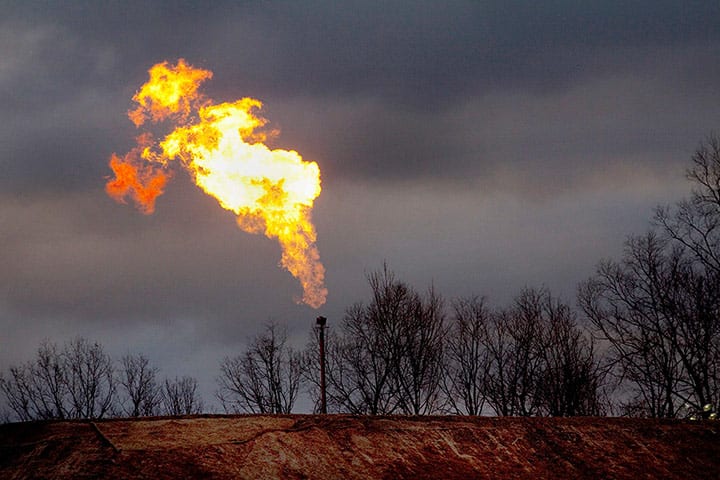Legendary investor Jeremy Grantham has delivered another stinging assessment of the global oil industry, suggesting that it is in inevitable decline.
 Grantham, the UK investor who founded the $130 billion Boston-based GMO Asset Management, says the US fracking boom, hailed by politicians, the fossil fuel and mainstream media for bringing cheap oil to the US – is the biggest red herring in the history of oil.
Grantham, the UK investor who founded the $130 billion Boston-based GMO Asset Management, says the US fracking boom, hailed by politicians, the fossil fuel and mainstream media for bringing cheap oil to the US – is the biggest red herring in the history of oil.
“It will surely be seen in the future as a real testimonial to the sheer energy of American engineering at its best, employing rapid trials and errors – with all of the risk-taking that approach involves – that the rest of the world finds so hard to emulate,” he writes in GMO’s latest quarterly report. (On which we have reported before. See: Wind, solar to replace fossil fuels within decades).
“Similarly, it will always stand out as remarkable proof that, so late in the realization of the risks of climate change and environmental damage, the U.S. could expressly deregulate such a rapidly growing and potentially dangerous activity.”
Grantham points out there are few if any restraints on what chemicals can be used and in what amounts, and the leakage of methane is not seriously monitored, despite the fact that methane is over 86 times as potent a greenhouse gas, on a 20-year horizon, as CO2.
“This has given the U.S. industry a second spectacular advantage over more regulated fracking efforts elsewhere and demonstrated once again the remarkable influence of the energy industry over the U.S. governmental process, if “process” is not too dignified a word.”
But the criticism is also economic. The fracking boom has given a short term kick to the US economy, and is causing the glut in the global market and falling prices – but nothing that really matters in the market is changed.
“What it has not done is more important, and that is what makes it a red herring,” Grantham writes.
“It has not prevented the underlying costs of traditional oil from continuing to rise rapidly or the cash flow available to oil-producing countries like Saudi Arabia, Iran, and especially Venezuela from getting squeezed from both ends (rising costs and falling prices).”
Strangely, the fracking industry does not show much positive cash flow despite considerably higher prices over the last two years than exist today. It seems the cost of fracking may be higher than thought, and the depletion rates quicker than acknowledged. Most wells run out within two years. In short, it is something of a money-making mirage.
“Yes, they have been drilling more wells that chew up money, but not that many more, and good operations have lowered the costs per well by over a third.
“On the other hand, they have drilled, as always the best parts of the best fields first, and because the first two years of flow are basically all we get in fracking, we should have expected considerably better financial results by now. The aggregate financial results allow for the possibility that fracking costs have been underestimated by corporations and understated in the press.”
Meanwhile, cheap traditional oil becomes increasingly difficult to find both in the U.S. and globally. Last year, despite spending nearly $700 billion globally – up from $250 billion in 2005 – the oil industry found just 4 1⁄2 months’ worth of current oil production levels, a 50-year low!
“Clearly, the writing is on the wall. It is now up to our leadership and to us as individuals to read it and act accordingly.”
Grantham says the future clearly lies in alternative fuels and a transition away from fossil fuels. The loss in economic productivity from the cost burden of fossil fuels depends on finding alternatives.
“I think that the old growth rates in productivity will not come back, at least until we have had a transition away from fossil fuels,” he says.
Solar and wind competing in ideal locations, but only the highest cost fossil fuels, and not the old oil” that cost $10/bbl on average 15 years ago.
“What is needed is a continuing steady drop in the cost of alternatives for another 20 or more years before the surplus they offer has any chance of equalling our old, 1950-2000 fossil fuel surplus. Fortunately, a continued steady decline in the cost of wind power is likely, and a rapid decline in solar and energy storage costs is almost a certainty.
“It is vital therefore, if we want to reduce these stresses, to emphasize fuel efficiency, reduce wastage of all kind, and encourage the rapid development of sustainable “alternative” forms of energy, particularly those that displace oil.
“These alternatives are competitive today with only very high-cost fossil fuels but in 20 to 30 years, if encouraged, may replace $40 or $50 barrels of oil, at which price the global economic system may muddle through.
“Unfortunately, this target is hindered by the fossil fuel industries, which actively oppose incentives for alternatives.”








